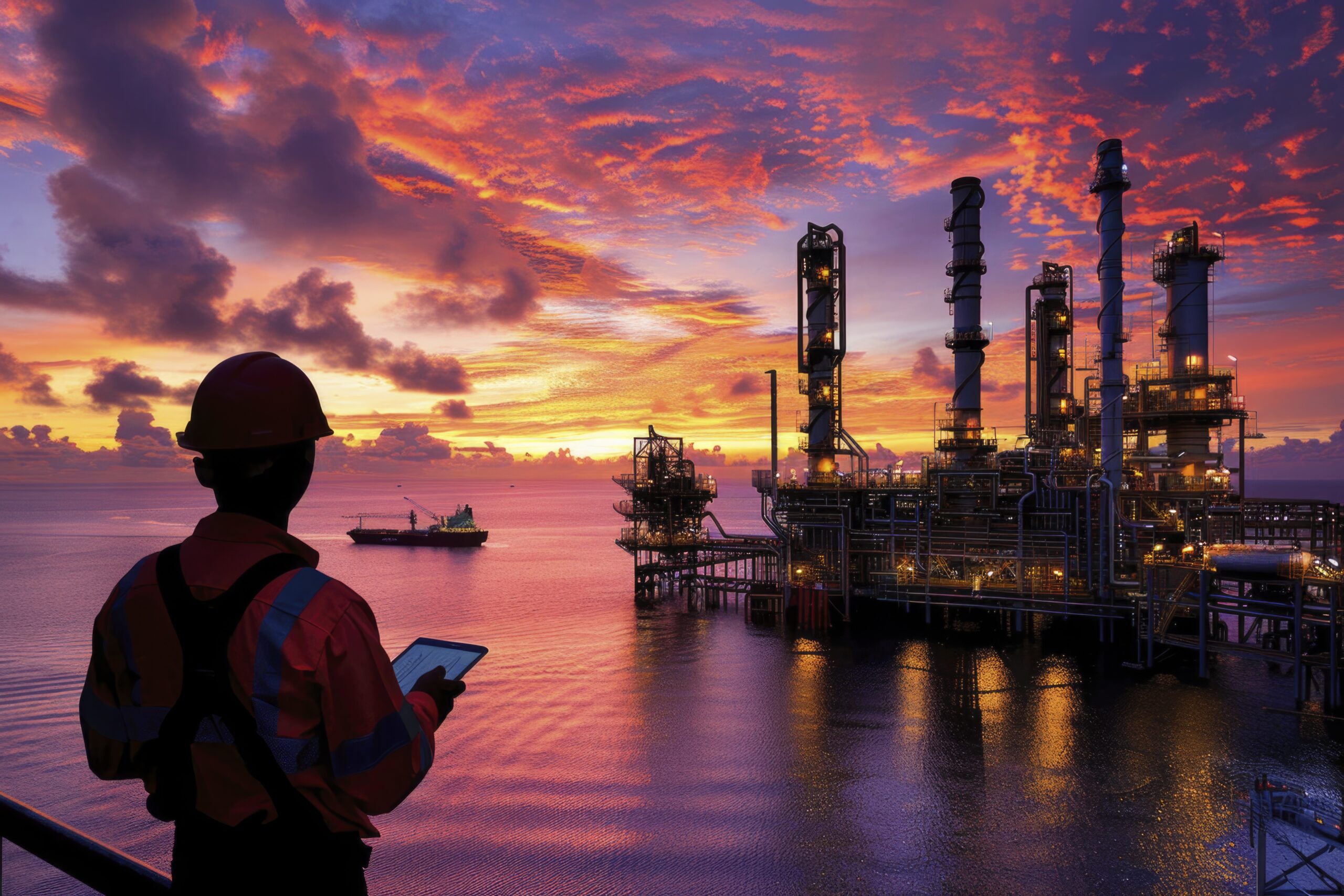
The Intelligent Refinery: How AI and Machine Learning are Revolutionizing Oil & Gas
Artificial Intelligence (AI) and Machine Learning: AI’s impact on predictive maintenance, operational efficiency, and workforce training.
The oil and gas industry, a cornerstone of global energy supply, is undergoing a seismic shift, driven by the pervasive influence of Artificial Intelligence (AI) and Machine Learning (ML). Far from being futuristic concepts, these technologies are actively reshaping how we discover, extract, refine, and distribute vital resources. Today, let’s dive into three critical areas where AI and ML are making a tangible, transformative impact: predictive maintenance, operational efficiency, and workforce training.
Predictive Maintenance: From Reactive Fixes to Proactive Prevention
For decades, the mantra in industrial maintenance has been “fix it when it breaks.” This reactive approach, while sometimes unavoidable, often leads to costly downtime, unexpected production halts, and potential safety hazards. Enter AI and ML, ushering in an era of predictive maintenance.
How it works:
- Data Deluge, Intelligent Insights: Oil and gas facilities are brimming with sensors monitoring everything from pressure and temperature to vibration and flow rates. AI algorithms, particularly ML models, can sift through this vast torrent of data, identifying subtle patterns and anomalies that human eyes might miss.
- Early Warning Systems: By analyzing historical data and real-time sensor feeds, ML models can predict when a piece of equipment is likely to fail. This isn’t a crystal ball; it’s sophisticated pattern recognition. For example, a slight increase in vibration combined with a specific temperature fluctuation might signal an impending bearing failure in a pump.
- Optimized Maintenance Schedules: Instead of adhering to rigid, time-based maintenance schedules that might be too early or too late, predictive maintenance allows for condition-based interventions. Maintenance teams can be dispatched precisely when needed, before a critical failure occurs, minimizing downtime and maximizing asset lifespan.
The Impact:
- Reduced Downtime: Preventing unexpected breakdowns translates directly to fewer lost production hours, a massive gain in profitability.
- Lower Maintenance Costs: Proactive repairs are often less expensive than emergency fixes, and by avoiding catastrophic failures, companies can save on major component replacements.
- Enhanced Safety: Identifying potential equipment failures before they happen significantly reduces the risk of accidents and environmental incidents.
Operational Efficiency: Streamlining Every Facet of Production
Beyond maintenance, AI and ML are proving invaluable in optimizing the intricate dance of oil and gas operations. From the wellhead to the distribution pipeline, these technologies are driving unprecedented levels of efficiency.
Key Applications:
- Reservoir Characterization and Optimization: ML can analyze seismic data and well logs with incredible speed and accuracy, helping geoscientists better understand subsurface formations. This leads to more precise drilling plans and optimized extraction strategies, maximizing the recovery of hydrocarbons.
- Process Optimization in Refineries: AI-powered systems can monitor and adjust complex refinery processes in real-time. By learning from historical data and external factors like market demand and feedstock quality, they can fine-tune parameters to maximize yield, minimize energy consumption, and reduce waste.
- Supply Chain and Logistics: AI can optimize the movement of crude oil and refined products. This includes predicting demand fluctuations, optimizing shipping routes, managing inventory levels, and even forecasting potential disruptions in the supply chain due to geopolitical events or weather.
- Energy Management: AI can identify opportunities to reduce energy consumption across the entire value chain, from powering drilling rigs to operating processing plants, contributing to both cost savings and sustainability goals.
The Impact:
- Increased Production Yield: Smarter extraction and refining processes directly lead to more valuable product output.
- Lower Operating Costs: Optimized energy usage, streamlined logistics, and efficient processes all contribute to a more cost-effective operation.
- Improved Quality Control: Real-time monitoring and AI-driven adjustments can ensure consistent product quality.
Workforce Training: Equipping the Next Generation of Oil & Gas Professionals
The oil and gas industry is also facing a skilled labor shortage and the need for a workforce adept at utilizing new technologies. AI and ML are playing a crucial role in modernizing workforce training.
Revolutionizing Learning:
- Immersive Training Simulations: AI-powered virtual reality (VR) and augmented reality (AR) platforms can create highly realistic training environments. Employees can practice complex procedures, emergency responses, and equipment operation in a safe, simulated setting, without real-world risks.
- Personalized Learning Paths: ML algorithms can assess an individual’s skill level and learning pace, then tailor training modules to their specific needs. This ensures that each employee receives the most effective and efficient instruction.
- Knowledge Management and Expert Systems: AI can act as a digital coach, providing instant access to vast amounts of technical information and best practices. This helps junior staff learn from experienced professionals and ensures that critical knowledge isn’t lost as experienced workers retire.
- Performance Feedback and Skill Development: AI can analyze employee performance in simulations and on the job, providing detailed feedback and identifying areas for further development.
The Impact:
- Faster Onboarding and Skill Development: New employees can become proficient more quickly, reducing the time to productivity.
- Enhanced Safety and Competency: Realistic simulations and personalized training lead to a more skilled and safety-conscious workforce.
- Knowledge Retention and Transfer: AI-powered systems help capture and disseminate institutional knowledge, bridging generational gaps.
- Adaptability to New Technologies: The workforce becomes more agile and prepared to embrace future technological advancements.
Artificial Intelligence and Machine Learning are not just tools — they’re catalysts for a smarter, safer, and more sustainable operational future. From predictive maintenance that prevents failures to automated systems that enhance efficiency and AI-driven training that empowers people, organizations leveraging these technologies gain a powerful competitive advantage in the digital era.
The Future is Intelligent
The integration of AI and Machine Learning into the oil and gas industry is not a trend; it’s a fundamental transformation. From preventing costly equipment failures to optimizing every step of production and empowering the workforce, these intelligent technologies are paving the way for a safer, more efficient, and more sustainable future for the energy sector. As the industry continues to evolve, embracing and investing in AI and ML will be paramount for any organization seeking to thrive in the intelligent refinery of tomorrow.





Hi, this is a comment.
To get started with moderating, editing, and deleting comments, please visit the Comments screen in the dashboard.
Commenter avatars come from Gravatar.